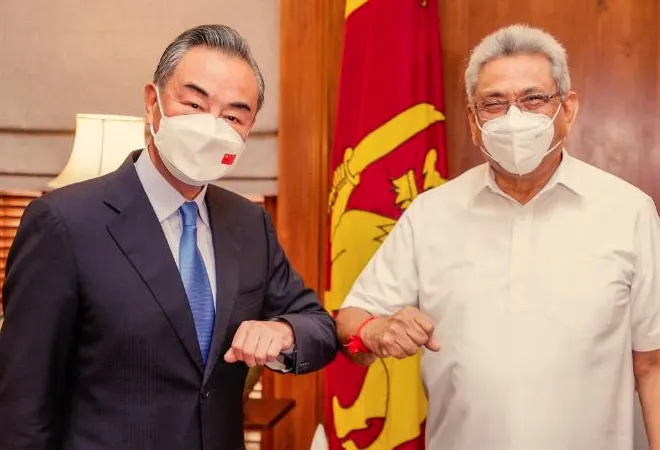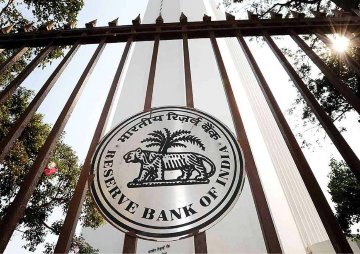
As Sri Lankan President Gotabaya Rajapaksa requested visiting Chinese Foreign Minister Wang Yi early this month to provide a moratorium on debt repayments, the issue of “problematic Chinese debts” once again came into the global spotlight. The Chinese state media fumed over the intensified ‘debt-trap’ criticism and accused Indian as well as international media for running a politically-motivated disinformation campaign aimed at maligning China’s image and curbing its rise. Some of the Chinese commentators’ came up with their own theories to counter the debt trap narrative, including the ones that are analysed in this essay.
“It is Sri Lanka’s fault”
One argument is that the real reason why Sri Lanka has fallen into the dilemma of foreign exchange depletion is because of its weak economic foundation, insufficient hematopoietic (self-sustaining) capacity, and the government's long-term excessive borrowing and improper debt structure arrangement. Such long-term living beyond their means, unreasonable use of external debt, and unreasonable loan interest structure, coupled with “grey rhino and black swan incidents” like the terrorist attacks in 2019, the pandemic, and the financial crisis since 2020 has brought Sri Lanka to the brink. Neither China nor Chinese loans are the main causes behind Sri Lanka’s economic challenges. After all, China has not forced Sri Lanka to borrow money. According to the Chinese, all loan requests have been made by Sri Lanka—an independent, sovereign nation that dominates its lending, investment, project decision, according to its own needs—so it cannot blame China for its economic woes. Debt problem of a debtor country cannot be the responsibility of the creditor country.
According to the Chinese, all loan requests have been made by Sri Lanka—an independent, sovereign nation that dominates its lending, investment, project decision, according to its own needs—so it cannot blame China for its economic woes.
“It is the US’ fault”
Some Chinese columnists tried to shift the blame on to the United States (US), by transforming the “China Debt trap” narrative to “US dependence” narrative. They argued that Sri Lanka's economy is deeply linked to the US dollar, with as much as 60 percent of Sri Lanka's repayment needs to be made in US dollars. The US dollar settlement is making Sri Lanka's import costs more expensive across sectors. Now with “the US exporting inflation and tightening monetary policy”, Sri Lanka's economy has come to the brink of collapse. Therefore, the US should reflect on its own role behind Sri Lanka’s foreign exchange crisis rather than blaming China. Sri Lanka, on the other hand, should consider diversifying its foreign exchange reserves and trading currencies in Renminbi.
“It is India’s fault”
Chinese commentators also rebuked India for being the mastermind behind what they called the “dubious debt trap theory”. They argued that India is upset as it perceives Sri Lanka as its own sphere of influence and expects it to give first preference to India. Now, since India's investment, loans, and aid in Sri Lanka cannot match up to China's, India is very nervous and anxious about the close relationship between China and Sri Lanka. Further, in the context of the continuing Line of Actual Control (LAC) stalemate, New Delhi's use of Sri Lanka's debt problem to frame China has become more urgent and undisguised.
Since India's investment, loans, and aid in Sri Lanka cannot match up to China's, India is very nervous and anxious about the close relationship between China and Sri Lanka.
However, despite the angry assertions and war of words, deep-down, Sri Lanka’s ongoing economic crisis has been a major cause of embarrassment and concern for China internally. There has been much discussion in the Chinese internet about the plight and suffering of ordinary people in Sri Lanka due to record inflation, food prices soaring, and state coffers drying up. In this context, one of the key questions doing the rounds is how such a negative development might impact Sri Lankans’ attitude towards Chinese capital, what influence it will have on the local elections, and what it means for the overall China-Sri Lanka relations. China is not unaware of Sri Lanka’s deep anxiety and insecurity over its unilateral dependence on China. Research by Chinese scholars often highlight issues like structural imbalance in China-Sri Lanka trade and investment, rising debt, China’s relatively closed and inward-looking investment model with low participation from Sri Lanka, its inability to generate sustainable employment and tax contributions in the island nation, thereby, having little impact on lives and livelihoods of people—all have been major causes of dissatisfaction and resentment amongst the Sri Lankan government and people. All these, they say, are causing Sri Lanka to diversify and adopt a strategy of balancing major powers. It is also lamented, in certain quarters, that China is no longer the dominant player in Sri Lanka's foreign relations as it was during the civil war days, but has become yet another party, albeit an important party, that also needs to be “balanced”. Although it is often highlighted that China needs to appropriately adjust its investment model in Sri Lanka; improve the quality of cooperation; and encourage multilateral cooperation with India, Japan, EU, amongst other players to enhance Sri Lanka’s production capacity and competitive advantage, however, concrete measures by China to change the situation on the ground are still few and far between.
One of the key questions doing the rounds is how such a negative development might impact Sri Lankans’ attitude towards Chinese capital, what influence it will have on the local elections, and what it means for the overall China-Sri Lanka relations.
The other issue of concern is about how the Sri Lankan case might strengthen negative impressions on Chinese investments in other countries and impact their judgement about participating in the Belt and Road Initiative (BRI) now and in the future. There have been instances in the past where countries such as Myanmar, Malaysia, and Nepal referred to the Sri Lankan case as a negative precedent and suspended some Chinese investment projects due to concern over debt. From that perspective, it is important to note that most of China’s projects in South Asia are mainly for demonstration purposes—creating a favourable impression about China locally and globally and winning the hearts and minds of the people are amongst their key mandates. From that perspective, the Sri Lankan debt crisis is a big blow to Chinese objectives both in the region and beyond.
The views expressed above belong to the author(s). ORF research and analyses now available on Telegram! Click here to access our curated content — blogs, longforms and interviews.




 PREV
PREV


